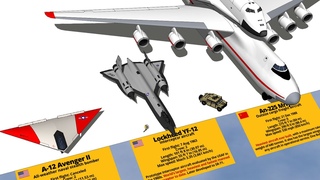Westland Lysander | The British “Spy Taxi“ Aircraft Of WWII
Perhaps the best-known role for the Westland Lysander during the Second World War was its use as a “spy taxi”, an aircraft capable of flying low under the radar and delivering secret agents, weapons, and radio equipment to resistance fighters in France and Belgium. “Flying a Lysander is truly a remarkable experience. One gets the feeling that with 20 hours or so in the airplane, you could do amazing things with it. Too bad they were never put on floats! Bush-flying with a Lysander would be eye-opening!“
The Westland Lysander is a British army co-operation and liaison aircraft produced by Westland Aircraft that was used immediately before and during the Second World War.
After becoming obsolete in the army co-operation role, the aircraft’s short-field performance enabled clandestine missions using small, improvised airstrips behind enemy lines to place or recover agents, particularly in occupied France with the help of the French Resistance. Royal Air Force army co-operation aircraft were named after mythical or historical military leaders; in this case, the Spartan admiral Lysander was chosen.
In 1934 the Air Ministry issued Specification for an army cooperation aircraft to replace the Hawker Hector. Initially, Hawker Aircraft, Avro, and Bristol were invited to submit designs, but after some debate within the Ministry, a submission from Westland was invited as well. The Westland design, internally designated P. 8, was the work of Arthur Davenport under the direction of “Teddy“ Petter. It was Petter’s second aircraft design and he spent considerable time interviewing Royal Air Force pilots to find out what they wanted from such an aircraft. The army wanted a tactical and artillery reconnaissance aircraft to provide photographic reconnaissance and observation of artillery fire in daylight – up to about 15,000 yards (14 km) behind the enemy front. The result of Petter’s pilot inquiries suggested that field of view, low-speed handling characteristics, and STOL performance were the important requirements.
Davenport and Petter designed an aircraft to incorporate these features. The Lysander was to be powered by a Bristol Mercury air-cooled radial engine and had high wings and a fixed conventional landing gear mounted on an innovative inverted U square-section tube that supported wing struts at the apex and contained internal springs for the faired wheels. The large streamlined spats also contained a mounting for a Browning machine gun and fittings for removable stub wings that could carry light bombs or supply canisters. The wings had a reverse taper towards the root, which gave the impression of a bent gull wing from some angles, although the spars were straight. It had a girder-type construction faired with light wood stringers to give the aerodynamic shape. The forward fuselage was a duralumin tube joined with brackets and plates, and the after part was welded stainless steel tubes. Plates and brackets were cut from channel extrusions rather than being formed from sheet steel. The front spar and lift struts were extrusions. The wing itself was fabric covered and its thickness was greatest at the strut anchorage, similar to that of later marks of the Stinson Reliant high-winged transport monoplane.
General characteristics
Crew: 2 (1 pilot, 1 pass.)
Length: 30 ft 6 in ( m)
Wingspan: 50 ft 0 in ( m)
Height: 14 ft 6 in ( m)
Wing area: 260 sq ft (24 m2)
Airfoil: RAF 34 modified
Empty weight: 4,365 lb (1,980 kg)
Max takeoff weight: 6,330 lb (2,871 kg)
Powerplant: 1 × Bristol Mercury XX 9-cylinder air-cooled radial piston engine, 870 hp (650 kW)
Propellers: 3-bladed
Performance
Maximum speed: 212 mph (341 km/h, 184 kn) at 5,000 ft (1,524 m)
Stall speed: 65 mph (105 km/h, 56 kn)
Range: 600 mi (970 km, 520 nmi)
Service ceiling: 21,500 ft (6,600 m)
Time to altitude: 10,000 ft (3,048 m) in 8 minutes
Take-off distance to 50 ft (15 m): 915 ft (279 m)
Armament
Guns: 2x forward-firing .303 in (7.7 mm) Browning machine guns in wheel fairings and two more for the observer.
Bombs: 4× 20 lb (9 kg) bombs or 1x drop tank (fuel or cargo) under rear fuselage and/or 500 lb (227 kg) of bombs or drop tanks on undercarriage stub wing hardpoints (if fitted)
















